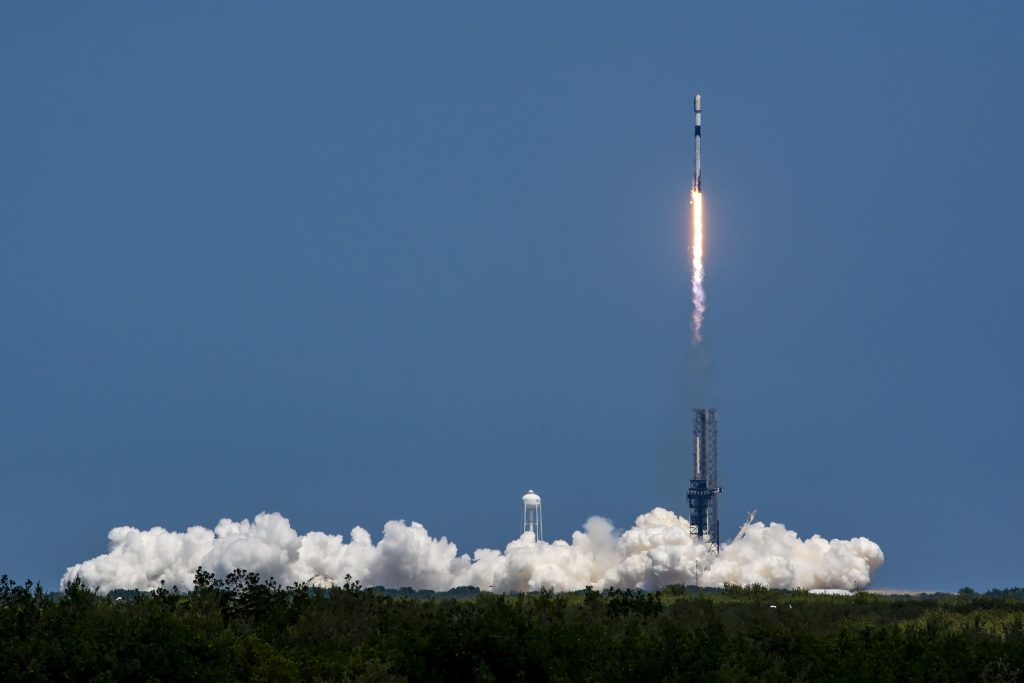WASHINGTON — SpaceX’s ambitious Starlink satellite network is surpassing expectations at a rapid pace, according to a recent report by Quilty Space. Quilty Space, a market research and consulting firm, has discussed a report forecasting Starlink's potential revenue.
The report, discussed by Quilty Space analysts on a webinar May 9, forecasts Starlink is on track to generate a staggering $6.6 billion in revenue for 2024, defying industry skepticism and rewriting the future of satellite internet.
Chris Quilty, founder of Quilty Space, stated that industry veterans were skeptical about the success of SpaceX's Starlink, especially after past satellite broadband ventures failed. However, the success has exceeded expectations.
In May 2019, SpaceX launched the initial 60 Starlink satellites on its Falcon 9 rocket. SpaceX sent the first 60 Starlink satellites into orbit using the company’s Falcon 9 rocket in May 2019.
Currently, Starlink has nearly 6,000 satellites, with over 5,200 operational, providing internet access to 2.7 million subscribers in 75 countries. Starlink now has approximately 5,200 operational satellites and provides internet access to 2.7 million subscribers across 75 countries. Quilty Space's rapid growth prompted the company to further examine Starlink's financial performance.
Quilty stated, "We're projecting a revenue jump from $1.4 billion in 2022 to $6.6 billion in 2024."
In comparison, the combined revenue of the two largest geostationary satellite operators, SES and Intelsat, is around $4.1 billion.
How Starlink achieved explosive growth
Quilty explained that Starlink's success lies in its rapidly growing subscriber base, surpassing competitors like Viasat and Hughes in just a few years.
Quilty Space estimates Starlink’s EBITDA to reach $3.8 billion in 2024, a significant increase from negative $128 million in 2022, indicating positive free cash flow in 2024.
Starlink's success is also attributed to its popularity in wealthier countries with customers willing to pay a premium, as noted by Justin Cadman, co-chief executive of Quilty Space.
Quilty estimates that Starlink’s current subscriber base includes approximately 50,000 mobility, enterprise, and government users, excluding those supporting Ukraine. The company is expanding into enterprise, mobility, and government markets.
Cost advantage in manufacturing
SpaceX's ability to keep spacecraft costs lower than industry standards has contributed to Starlink’s financial success, according to Caleb Henry, director of research at Quilty Space.
Caleb Henry stated, "Starlink has done an incredible job at keeping spacecraft costs lower than any other in the industry."
Quilty Space approximates that the expense of Starlink satellites has changed a lot. The initial V1 satellites cost about $200,000, while the latest V2 mini version costs around $800,000, reflecting its increased size and capabilities (from 260kg to 730kg).
In the future, Quilty expects the V3 satellite to weigh around 1,500kg and cost about $1.2 million.
So how did SpaceX achieve this cost advantage? Henry points to two main factors: aggressive vertical integration and high-volume production.
“By handling a large part of the manufacturing process in-house,” explained Henry, “SpaceX avoids the profit margins typically added by external suppliers, keeping costs down.” Additionally, SpaceX has established an unprecedented production rate, churning out satellites at a rate unseen before in the industry.
Focusing on efficiency has trade-offs. As Henry highlights, “the spacecraft have become more powerful to handle increased capacity and data rates, but that leads to a higher cost and mass.”
Quilty Space estimates that approximately 3,000 of SpaceX’s 13,000 employees work on Starlink.
Henry predicts that if SpaceX’s next-generation Starship rocket is operational for Starlink deployments by 2025, “they might jump directly to launching the V3 version of their satellites.”









